Some freelance attempts at Obama iconography only end up being counter-productive. Instead of depicting Obama as the Messiah, or some benevolent socialist dictator, which is generally the goal of pro-Obama art, these depictions cross the line to unflattering — and even downright creepy.
This stencil seen in Berkeley, for example, depicts a very dour and menacing Obama, with a “lean and hungry” look to make the viewer feel decidedly uncomfortable. Luckily, some child (or prankster) has given Lean and Hungry Obama a bloody nose by squishing some berries on the wall, which undermines the menace somewhat.
Elsewhere in Berkeley I spotted this t-shirt, which has to be the most unsettling Obama portrait I’d ever seen. Why does it give me nightmares? Perhaps because it reminds me of the portrait of “Big Brother” in Orwell’s 1984?
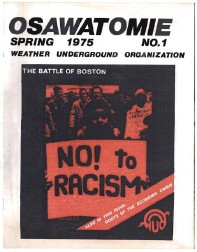 |
Zomblog has obtained an extremely rare copy of the first issue of Osawatomie, a newspaper published by the Weather Underground in 1975. Noteworthy passages are reproduced below, along with exact transcriptions. The full pages, with each passage in context in high resolution, are found at the bottom of this post.
Much of Osawatomie, which was written at a time when the Dohrn-Ayers wing of the Weather Underground was transitioning from terrorism to “working from the inside” for revolution, concerns itself with the need to encourage “organizers” who will work in “communities” and use “audacity” to bring about “socialism” in America.
Don’t believe me? Read the quotes for yourself, and see them in context on the full pages below.
Rather than analyze the significance of the parallels between the ideas in Osawatomie, Barack Obama’s personal history as a “community organizer,” and the strategies, slogans and goals of his campaign for the presidency, I will let you the reader decide for yourself.
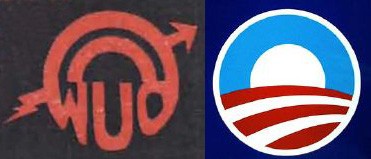 |
| The Weather Underground Organization logo in 1975; the Obama for President campaign logo in 2008. |
As with my earlier posts about Prairie Fire and Obama’s review of Ayers’ book, media members and bloggers are granted full permission to use the images and transcriptions on this page freely and without restriction or attribution.
Many thanks to Zomblog contributors experiencedtraveler and Sharmuta, who did the actual legwork of tracking down and obtaining this rare document.
The following quotes are scanned directly from Osawatomie, with a transcription below each image.

Revolutionaries must be organizers.

There are serious antiracist organizers building a revolutionary base in working class communities — in neighborhoods, shops, mills, mines, social institutions. There are those who are working among women, GI’s, vets, prisoners, among youth, students and the unemployed in every part of the country. There are some who have been at it for years and some who have just begun. Thousands more are needed; and each particular piece of work will have to be linked up into a whole. We need to out-organize the sophisticated and well-financed forces of George Meany, Louise Day Hicks, Ronald Reagan, George Wallace and Albert Shanker. Organizers need to crush this reactionary leadership with a revolutionized torrent of people.

But revolutionaries expect adversity, expect to be fought every inch of the way by an entrenched ruling class, expect to confront danger and demoralization and overcome it, with creativity and audacity.
Theory and ideology are important tools, and we should make study of Marxism-Leninism an important part of our work.
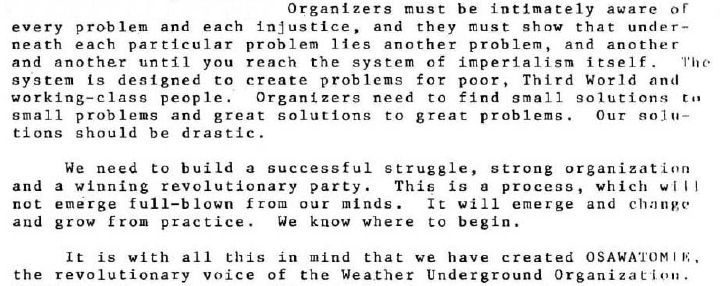
Organizers must be intimately aware of every problem and each injustice, and they must show that underneath each particular problem lies another problem, and another and another until you reach the system of imperialism itself. The system is designed to create problems for poor, Third World and working-class people. Organizers need to find small solutions to small problems and great solutions to great problems. Our solutions should be drastic.
We need to build a successful struggle, strong organization and a winning revolutionary party. This is a process, which will not emerge full-blown from our minds. It will emerge and change and grow from practice. We know where to begin.
It is with all this in mind that we have created OSAWATOMIE, the revolutionary voice of the Weather Underground Organization.
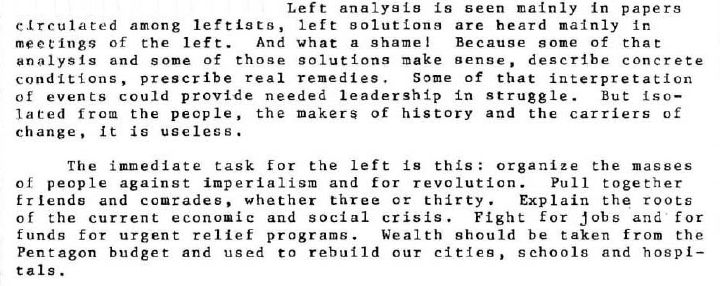
Left analysis is seen mainly in papers circulated among leftists, left solutions are heard mainly in meetings of the left. And what a shame! Because some of that analysis and some of those solutions make sense, describe concrete conditions, prescribe real remedies. Some of that interpretation of events could provide needed leadership in struggle. But isolated from the people, the makers of history and the carriers of change, it is useless.
The immediate task for the left is this: organize the masses of people against imperialism and for revolution. Pull together friends and comrades, whether three or thirty. Explain the roots of the current economic and social crisis. Fight for jobs and for funds for urgent relief programs. Wealth should be taken from the Pentagon budget and used to rebuild our cities, schools and hospitals.

DON’T MOURN, ORGANIZE!
Now comes a time of decision for the left. Can we overcome the small points that divide us? Can we come together to confront the enemy? Can we build a revolutionary practice firmly rooted among masses of people? Can we transform our lives in order to play our part in the developing storm?
These are the questions that press in on the left today. These are the questions because of this contradiction: millions of people are suffering from the crisis and conflicts generated by the imperialist system, and yet the left is small, dispersed and divided, not a visible force in the lives of the people. Revolutionary politics do not have a strong voice. The left is not situated to fulfill its historic mission — to focus and lead and make sense of mass discontent — to carry the present situation to its furthest limits.

… the system itself is inhuman, and socialism is a real alternative; the energy crisis is the fault of Rockefeller and the oil companies, not the Arab people; unemployment is caused by capitalism not “illegal aliens” stealing jobs; war in Indochina or the Mideast is part of the problem, not the solution; political and social action can change things.

… the Weather Underground Organization’s development. Like all our work, OSAWATOMIE is guided by a commitment to struggle, a determination to fight the enemy, the certainty that we will see revolution in our lifetime…
Here are the cover and three interior pages from the first issue of Osawatomie, from which all the the excerpts depicted above were taken. Click on each image to see it in high resolution:
Addendum:
Bill Ayers and Bernardine Dohrn have recently written a new book, Race Course Against White Supremacy, which will be published in June, 2009:

In the center of the book’s cover is a hidden design which seems to be an homage to their Weather Underground logo of years past:


Note: The newspaper Osawatomie was named after abolitionist John Brown, whose nickname was Osawatomie Brown. (Commemorative t-shirts here.) John Brown is one of the two figures on the cover of Ayers and Dohrn’s new book.
Spotted in Albany, California:
Also spotted in Albany — which seems to be home base for “Bark for Barack!” signs, which I’ve never seen anywhere else:
Luckily, dogs can’t vote — can they?
UPDATE:
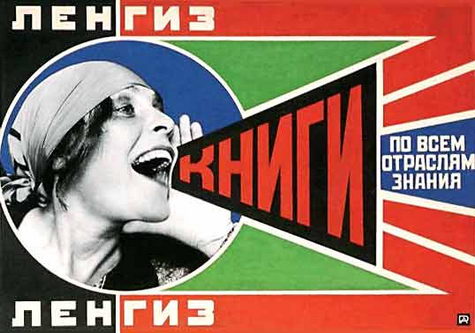
Turns out even this innocuous bit of silliness has a communist connection. The “Bark for Barack” poster is based on this famous graphic design by Soviet artist Alexander Rodchenko, who “used photo montage to enhance his images to create more powerful images that would be used for propaganda for the USSR.”
A trio of Sarah Palin lookalikes, along with a Bristol Palin lookalike, posed at the corner of Castro and Market in San Francisco yesterday.
The younger of the two female Palins seen here had issued a public call for a mass gathering of Palin lookalikes for Halloween — but only two other Palins showed up (along with 25 disappointed media members). A complete washout!
Even so, I predict that “Sarah Palin” will be the popular costume for this year’s Halloween.
Politically speaking, whatever the outcome of the election, I think the Democrats’ biggest mistake this campaign was to keep Palin in the headlines for the last two months. She now is easily the most famous woman in America. And name recognition leads to popularity, which leads to votes — no matter what the reason for your fame. If they had simply ignored her, the McCain ticket would have faded into obscurity. As they say: All publicity is good publicity!
There was actually one other participant: A guy dressed as a moose showed up, so the Palins could hunt him. But he was too emabarrassed to stand with the lookalikes, so instead he hovered at the back of the crowd.
New at zombietime:
Barack Obama’s Close Encounter with the Weather Underground
If you wish to comment on this article, you can do so here.
Zombietime reader “Chicken Kiev” submits these photos of graffiti in restrooms in Dwinelle Hall on the U.C. Berkeley campus:
For those not familiar with Dwinelle Hall, it is a large, sprawling building that houses many of the liberal arts and language departments at Cal.
A different restroom sported this sticker.
I’ve just posted a new essay at zombietime:
William Ayers’ forgotten communist manifesto: Prairie Fire
If you’d like to comment on it, you can do so here.
On Sunday afternoon, October 19, I spent a few hours volunteering at a “phone bank” for the Obama campaign. Not because I support Obama, mind you, but simply to get an idea of what goes on at these events and to see first-hand how the process works.
“Phone bank” is a term referring to any large group of campaign volunteers who cold-call potential voters in an attempt to ensure that they will vote for a particular candidate. Traditionally, such “get out the vote” drives are held inside campaign offices, using rows of phones provided by the campaign itself. But this phone-banking event was very modernistic: It was held in a public park, and volunteers were asked to use their own cell phones to make the calls — an additional benefit to the campaign, since the volunteers thereby absorbed the long-distance phone charges.
This phone bank was open to all comers, advertised as a public event, so I showed up, cell phone in hand, to see what I could see.
At the main campaign table in the park, one of the organizers signed me up and explained the system: he handed me a couple sheets containing a list of registered voters, their phone numbers, and various codes by which to identify them. As explained below in more detail, next to each name was a series of check-boxes which I was to fill out, indicating how the call went. [I blurred out all last names and phone numbers in the photo, to protect people’s privacy.]
Next the organizer handed me a “Phonebank script” which he explained I could refer to during the call. He assured me that I didn’t need to refer to the script — it was only there as a handy reminder of what should be said, and as a cue-card in case I got stage fright and froze up during the conversation.
Interestingly, the script only had instructions for what to do if the person on the line was either an Obama supporter or was undecided. I asked what we were supposed to do if the person was a McCain supporter, and he told me: If that happens, just end the call as quickly as possible and move on to the next one.
Before I actually started calling, I asked one of the many assistants who were circulating through the park a few questions about the list I had been handed, and how I was supposed to fill out the check-boxes. She explained: The first column is for those calls in which you don’t reach anyone — fill in the appropriate box indicating what happened, i.e. No answer/message machine; refused to speak to me or slammed down the phone; respondent only spoke Spanish (I was calling New Mexico, since it was a “swing state”); or the number had been disconnected. But if they answered and were willing to talk, I moved to the next column: First I should ask who they’re voting for, and check the appropriate box on the form. If they’re voting for McCain or Nader, check the box but then end the call immediately and move on to the next call. If they are Obama voters, ask them if they’ve voted early; if they haven’t, encourage them to do so; and ask if they want to become volunteers. Then go on and ask about their preference in the New Mexico senate race.
I asked what the last column meant; she told me that “EV Location” was the nearest “early voting location” where the respondent could vote before election day. I asked how we knew what the nearest location was, since we didn’t have their addresses; she said that the address of each voter was in the database, it just wasn’t printed on the handout.
She also said that I shouldn’t expect to have too many actual conversations, because most of the time I’ll only be filling out column 1: Not Home/Refused/Spanish/Wrong #. She added, “Sometimes, you’ll call all nine numbers on a sheet and not get a single answer.”
So I got to work and started making some calls on my cell phone. Turns out the volunteer was right: Almost none of the calls were successful. I had been given two sheets, each listing nine voters, and out of the 18 calls I made:
3 had no answer
4 were message machines
7 answered but didn’t want to talk or immediately hung up
2 were disconnected numbers
1 was an Obama voter (who would vote on election day but who didn’t want to volunteer)
1 was a McCain voter
Which really got me to thinking, especially in relation to various arguments I made in my recent essay The Left’s Big Blunder. It was obvious to me that the Obama campaign was using these phone banks to generate statistics for voter preferences: they compile the answers that we phone-bankers record all over the country, and come up with percentages for their “internal polls” about how many people are planning to vote for Obama, McCain, etc. In my micro-sample, it was a 50-50 split. But what concerns me are those 14 people (out of 16 calls, excluding the wrong numbers) who either didn’t answer, or who hung up after answering. Why did those seven people hang up on me? Why did they not want to be polled? I’m sure the answers are varied and unique to each person, but could it be that one or two or more of them didn’t want to have a political discussion with an Obama campaign volunteer? And the four other people who let the answering machine get the call and three who didn’t answer at all — did any of them have caller ID and not answer because a stranger was calling? Why?
I feel, as I surmised in my essay, that any polling samples generated this way are potentially way off, and exclude most voters who simply refuse to be polled. The real question is: How do those people intend to vote? Because the “unpollable registered voters” demographic is likely to be the largest demographic of all. And we have no idea how they intend to vote, nor why they refuse to be polled, and if there is some correlation between refusing to talk to an Obama campaign volunteer and refusing to vote for Obama. Could the same principle hold true for calls made by professional polling organizations?
But most disturbingly of all: The Obama campaign knows the name, phone number and address (as the assistant told me) of each person called; and we volunteers do in fact mark down the voting preferences of each individual. So, through phone banks like these, should Obama in fact become president (and even if he doesn’t), he and his team will have a pretty extensive list of everyone who voted against him.
Hmmmm.
Food for thought.
A vendor was selling these shirts at the event; I really wanted to get a clear photo of one, but instead all I got was this blurry image. Oh well! But it confirms the thesis in my earlier essay (linked above) that Obama’s supporters are doing everything they can to declare his victory a foregone conclusion.
I decided that calling two pages’ worth was enough for the day. I turned in my sheets, picked up an Obama button, exchanged pleasantries with the organizers, and went on my way.
On February 29 of this year, a small protest in front of Berkeley’s Marine Corps Officer Recruiting Office produced some of the most egregious signs I’ve ever seen at a political event. One of my pictures from that day was was posted at Little Green Footballs, but I never put that one (or any others from the protest) on zombietime. Until now.
I don’t even remember what the supposed reason was for the protest on that particular day. Not that it matters. There’s always a reason to protest again America, isn’t there? (BTW, both of these signs refer approvingly to the 1983 Beirut barracks bombing in which 241 Americans and 58 Frenchmen were killed by a group calling itself “Islamic Jihad.”)
On the sidewalk, someone had inscribed a list of every single real or imagined American foreign policy misdeed since WWII.
The list went on and on…and on and on. They were still adding to it as I left.
On December 21, 1997, Barack Obama wrote a short review of William Ayers’ book A Kind and Just Parent: The Children of Juvenile Court, which had recently been published by Beacon Press. Here’s a photo of how the review appeared in the Chicago Tribune:
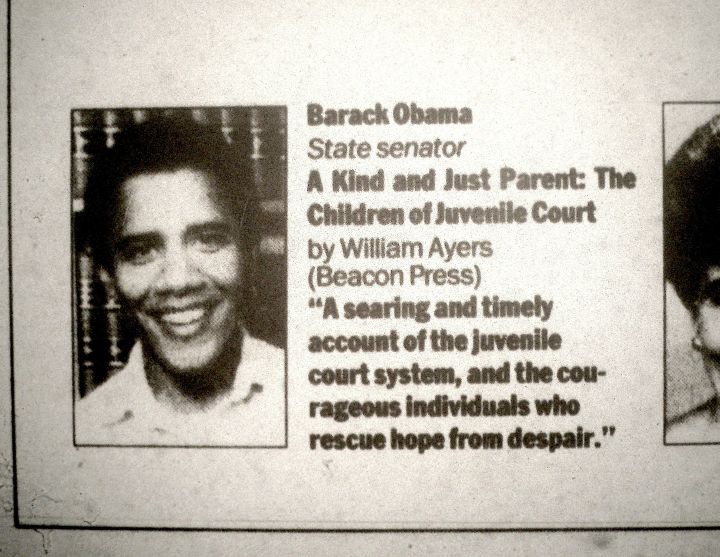
(Bloggers, journalists and media members are all free to re-post this image with no restrictions. If you would like a hi-resolution version, right-click or control-click here.)
Obama’s review of Ayers’ book says, “A searing and timely account of the juvenile court system, and the courageous individuals who rescue hope from despair.”
I had seen mentions of the existence of this review in a very few media outlets, including CNN, National Review, American Spectator, and a handful of others. But because the review was published before the Chicago Tribune began digitizing and archiving its articles online, there was no direct Web link to the review itself — only citations of it. So, out of curiosity, I took it upon myself to visit a library in San Francisco, and using the library’s Lexis-Nexis access and its archive of microfilm versions of major newspapers, including the Chicago Tribune, I finally tracked down a copy of the actual review itself.
Turns out the review was very short — what I had thought (from reading the citations in the online articles) were just short quotes from it was in fact the entirety of the review. But it was accompanied by a photo of Obama, standing by his statement. The review was part of a column called “Mark My Word,” in which Chicago notables praise their favorite current books.
Just a few weeks before this review was published in the Chicago Tribune, Obama and Ayers appeared together on a panel about juvenile justice organized by Michelle Obama on November 20, 1997:
Children who kill are called “super predators,” “people with no conscience,” “feral pre-social beings” — and “adults.”
William Ayers, author of A Kind and Just Parent: The Children of Juvenile Court (Beacon Press, 1997), says “We should call a child a child. A 13-year-old who picks up a gun isn’t suddenly an adult. We have to ask other questions: How did he get the gun? Where did it come from?”
Ayers, who spent a year observing the Cook County Temporary Juvenile Detention Center in Chicago, is one of four panelists who will speak on juvenile justice at 6 p.m. Thursday, Nov. 20, in the C-Shop. The panel, which marks the 100th anniversary of the juvenile justice system in the United States, is part of the Community Service Center’s monthly discussion series on issues affecting the city of Chicago. The event is free and open to the public.
Ayers will be joined by Sen. Barack Obama, Senior Lecturer in the Law School, who is working to combat legislation that would put more juvenile offenders into the adult system; Randolph Stone, Director of the Mandel Legal Aid Clinic; Alex Correa, a reformed juvenile offender who spent seven years in Cook County Temporary Detention Center; Frank Tobin, a former priest and teacher at the Detention Center who helped Correa; and Willy Baldwin, who grew up in public housing and is currently a teacher at the Detention Center.
I find it very hard — no, make that impossible — to believe that Barack Obama had “no idea” who William Ayers really was, or that he had a past as a notorious domestic terrorist (as Obama’s campaign has claimed) while serving on panels with Ayers and simultaneously praising Ayers’ book in a major newspaper.
This story is likely to continue growing, and I thought that the image above would provide a good “visual” for the Obama-Ayers connection.
[UPDATE: On page 82 of the book itself, Ayers mentions Obama. So there’s no question they knew each other.]
The following images are pretty much unnecessary; yet because of the intense nature of this campaign, and because every single tidbit of news is dissected, analyzed, doubted and challenged, I am posting these pictures to prove beyond any doubt that the photo of the Obama-Ayers review shown above is authentic, and not some Photoshop hoax, as I’m quite sure Obama’s defenders would claim if I didn’t pre-emptively debunk their accusations.
Feel free to ignore this section unless you’re interested in seeing “proof” that the review is real.
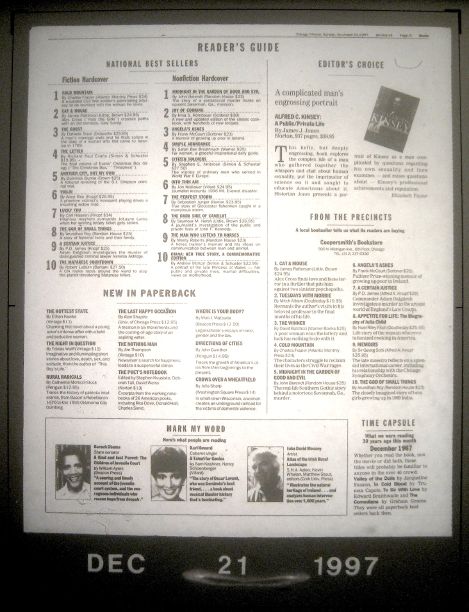
This shows the entirety of page 5 of the Chicago Review book section on December 21, 1997. Obama’s review is visible at the lower left. (Hi-res version of this photo here.)
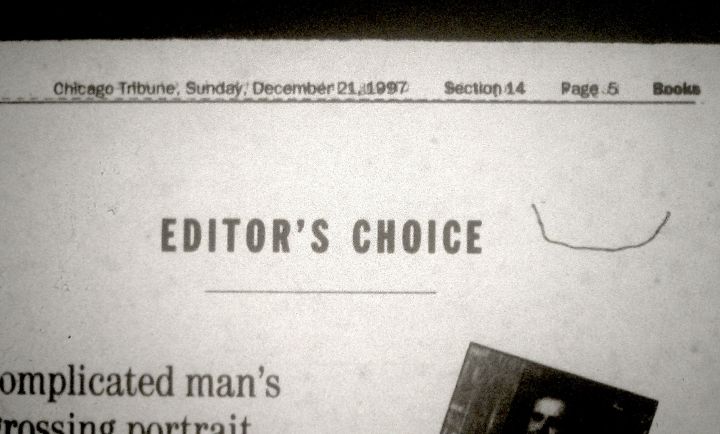
This shows the date and page number at the top of the page, confirming it really is from the Chicago Tribune on December 21, 1997. (Hi-res version of this photo here.)
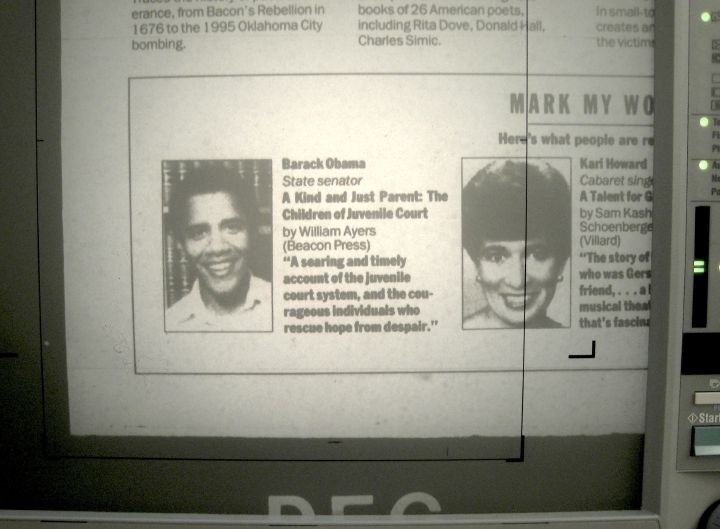
This picture shows the microfilm image in situ on the microfilm machine itself, proving it’s a physical artifact, not a digital Photoshop creation. (Hi-res version of this photo here.) Note also that the review directly above Obama’s review is of a book about domestic terrorists and bombers. Oh, the irony!
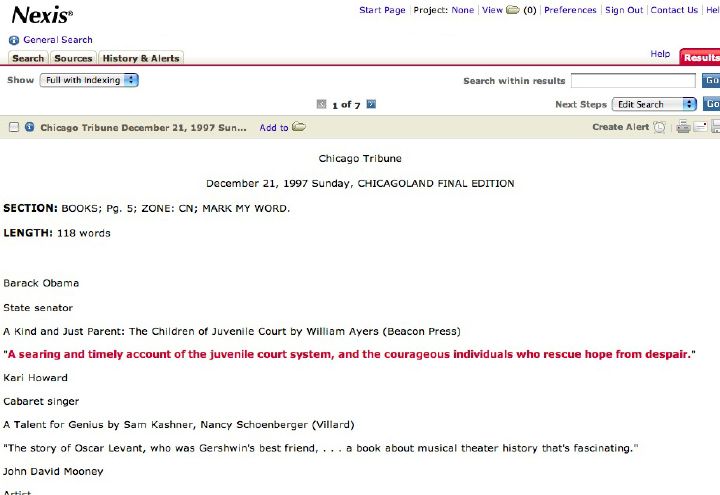
And this is a screenshot of the Lexis-Nexis listing on the library’s computer, proving that the review is part of the official digital archives. (Hi-res version of this photo here.)

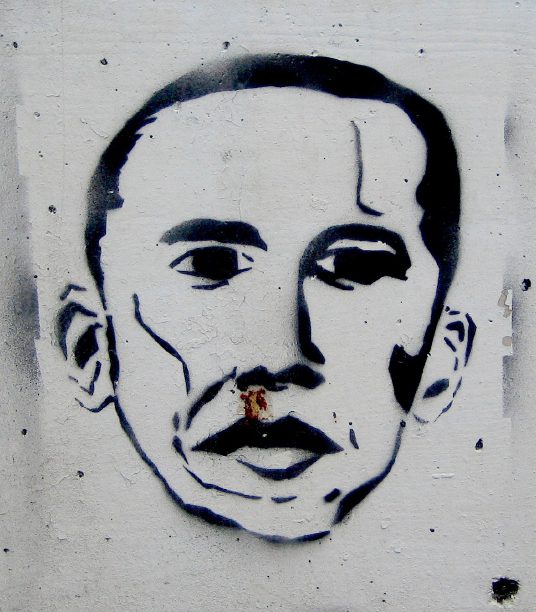





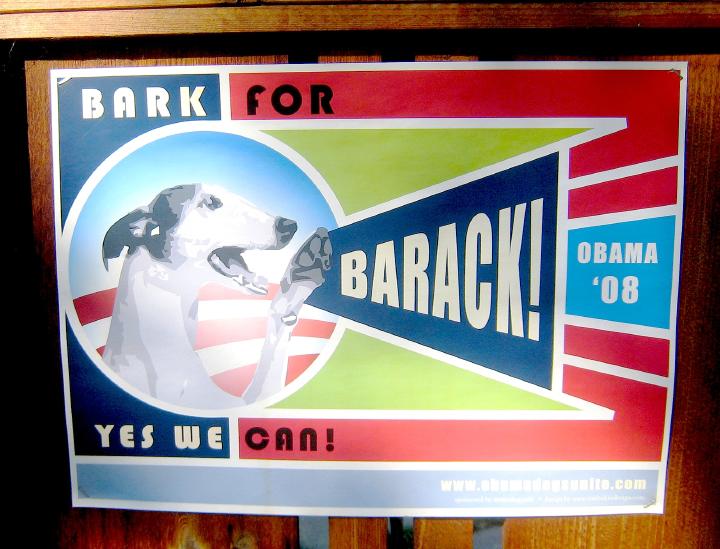
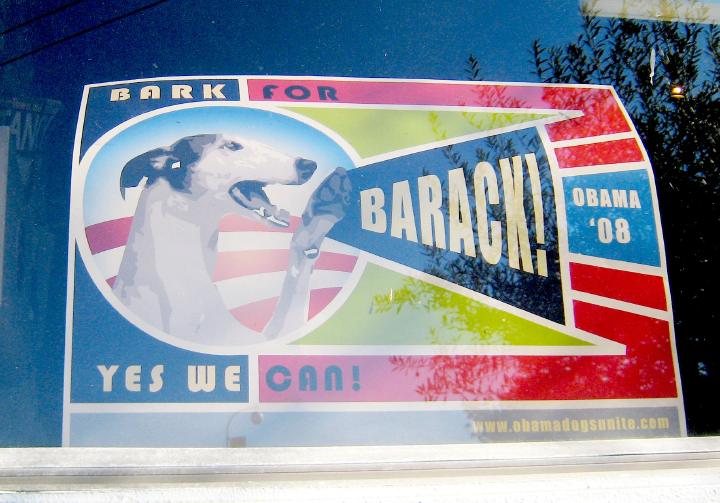








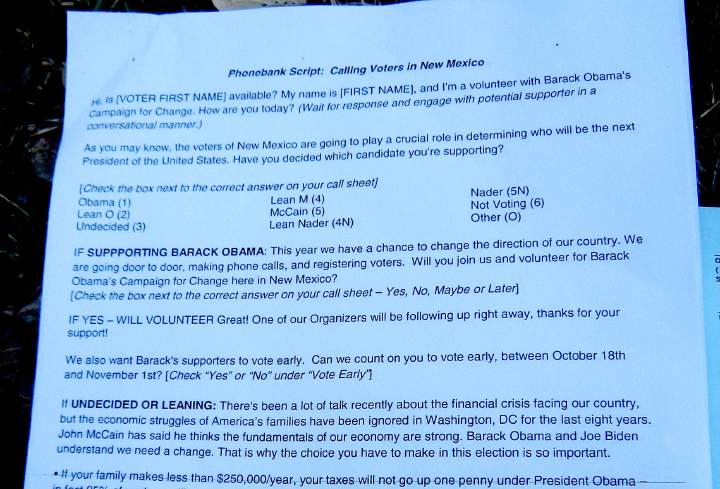




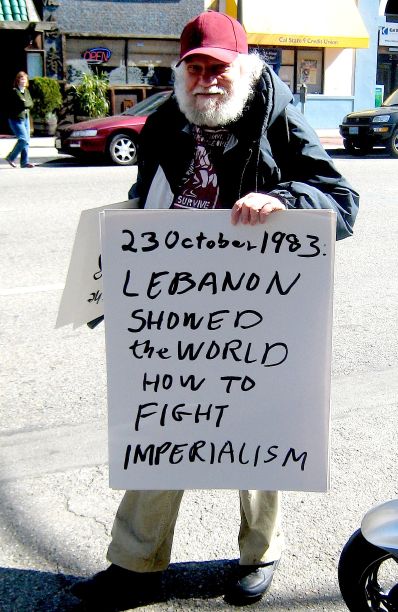


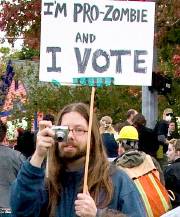 (Note: This is not a photo of me, but rather
(Note: This is not a photo of me, but rather